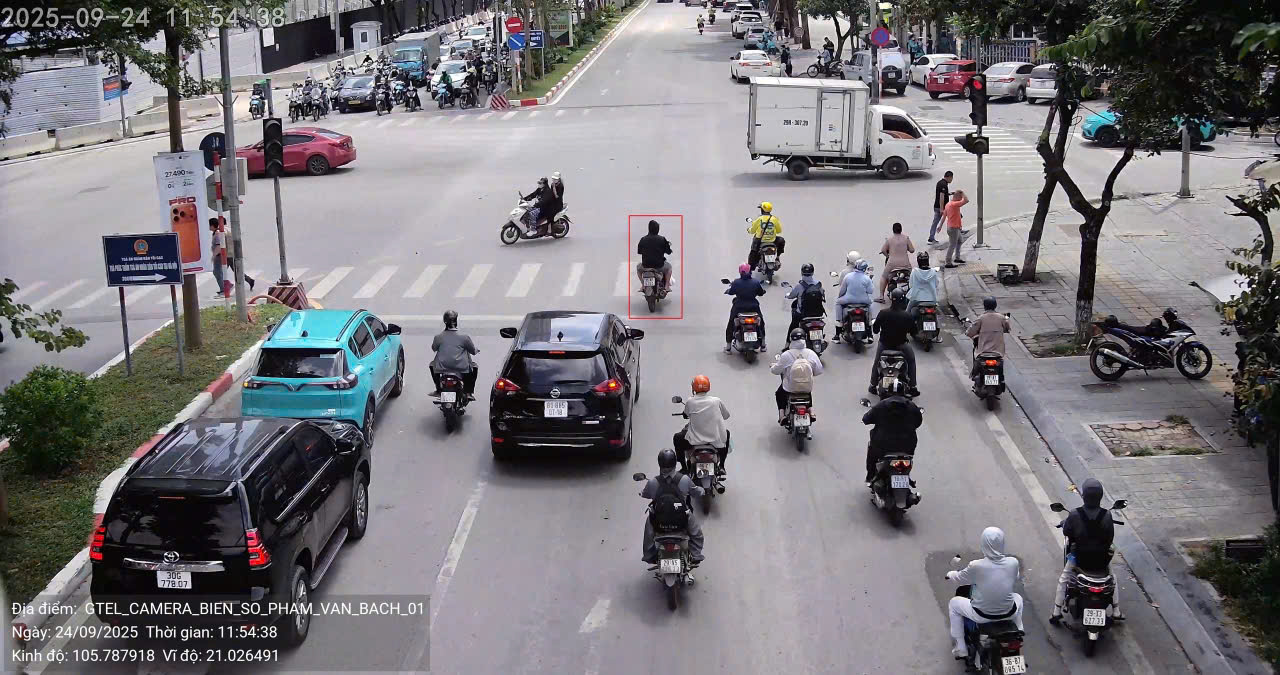According to the Traffic Police Department (Ministry of Public Security), the system went live on 24/9. Unlike conventional surveillance cameras that only record video for storage, AI cameras can analyze and identify violations, extract data, and transmit it to the traffic command center. There, officers verify the information before sending the records to the Hanoi City Police Department for processing.
From midnight to noon on 24/9, the two AI cameras detected 1,452 red-light violations, including 1,339 motorcycles and 113 cars. The system also recorded 343 motorcyclists not wearing helmets and three cases of driving in the wrong direction.
 |
An AI camera captures a motorcyclist running a red light on Pham Van Bach Street. Photo: Traffic Police Department |
An AI camera captures a motorcyclist running a red light on Pham Van Bach Street. Photo: Traffic Police Department
A representative from the Traffic Police Department stated that the initial data reflect a concerning level of traffic law compliance in Hanoi that needs to be addressed.
In addition to Pham Van Bach Street, the Traffic Police Department is also piloting two AI cameras on the Noi Bai-Lao Cai Expressway. These cameras have detected thousands of cases of drivers not wearing seat belts. In the near future, thousands of AI cameras will be installed in Hanoi and other localities to automatically detect and penalize violations, replacing the previous method of recording and waiting for traffic police officers to handle them directly.
According to regulations, running a red light in a car can result in a fine of 18-20 million VND and a deduction of 4 points from the driver's license. If an accident occurs, the fine increases to 20-22 million VND, and 10 points are deducted. For motorcycles, the fine for running a red light is 4-6 million VND.
Viet An












